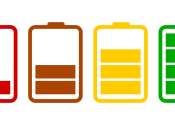Researchers develop a way to capture furnace emissions
Oak Ridge National Laboratory researchers have developed a novel solution to reduce the environmental impact of natural gas-condensing furnaces commonly used in U.S. homes.
Mar 1, 2022
0
64
Energy & Green Tech

Oak Ridge National Laboratory researchers have developed a novel solution to reduce the environmental impact of natural gas-condensing furnaces commonly used in U.S. homes.
Mar 1, 2022
0
64
Robotics

A team of researchers at Johannes Kepler University Linz has used biodegradable materials as ink to print 3D soft robots. In their paper published in the journal Science Robotics, the group describes how they developed their ...
Energy & Green Tech

A new high-temperature polymer fuel cell that operates at 80–160 degrees Celsius, with a higher-rated power density than state-of-the-art fuel cells, solves the longstanding problem of overheating, one of the most significant ...
Feb 7, 2022
0
141
Engineering

Using neutron imaging techniques at ANSTO, researchers from Macquarie University have gained a better understanding of how corrosion forms and spreads through concrete that is commonly used in sewer pipes.
Feb 3, 2022
0
13
Robotics

Science fiction novelists couldn't have come up with a crazier plot: microrobots streaming through blood or through other body fluids that are driven by light, can carry drugs to cancer cells and drop off the medication on ...
Feb 2, 2022
0
63
Energy & Green Tech

Batteries are in increasing demand because of their use in electric vehicles, consumer electronics, and grid scale storage. Their ubiquity is due, in part, to the rapid shift toward producing and using clean energy to replace ...
Feb 1, 2022
0
5
Energy & Green Tech

Since the discovery of electricity, inventors have struggled with how to store it. Batteries emerged relatively quickly as the most common way to preserve energy chemically, but from portability to rechargeability, it has ...
Jan 25, 2022
0
12
Energy & Green Tech

To establish a carbon-neutral circular economy in the future, technologies are needed that use carbon dioxide as a raw material. In the form of formate, CO2 can be metabolized by certain bacteria.
Nov 17, 2021
0
0
Computer Sciences

The amount and types of proteins our cells produce tell us important details about our health and how our bodies work. But the methods we have of identifying and quantifying individual proteins are inadequate to the task. ...
Nov 10, 2021
0
28
Energy & Green Tech

Known by expectant parents as the technology that enables them to see their child for the first time, ultrasound can be used at extremely low frequencies to serve an entirely different purpose. Researchers at KTH Royal Institute ...
Oct 13, 2021
0
296
An acid (from the Latin acidus/acēre meaning sour) is a substance which reacts with a base. Commonly, acids can be identified as tasting sour, reacting with metals such as calcium, and bases like sodium carbonate. Aqueous acids have a pH of less than 7, where an acid of lower pH is typically stronger, and turn blue litmus paper red. Chemicals or substances having the property of an acid are said to be acidic.
Common examples of acids include acetic acid (in vinegar), sulfuric acid (used in car batteries), and tartaric acid (used in baking). As these three examples show, acids can be solutions, liquids, or solids. Gases such as hydrogen chloride can be acids as well. Strong acids and some concentrated weak acids are corrosive, but there are exceptions such as carboranes and boric acid.
There are three common definitions for acids: the Arrhenius definition, the Brønsted-Lowry definition, and the Lewis definition. The Arrhenius definition states that acids are substances which increase the concentration of hydronium ions (H3O+) in solution. The Brønsted-Lowry definition is an expansion: an acid is a substance which can act as a proton donor. Most acids encountered in everyday life are aqueous solutions, or can be dissolved in water, and these two definitions are most relevant. The reason why pHs of acids are less than 7 is that the concentration of hydronium ions is greater than 10−7 moles per liter. Since pH is defined as the negative logarithm of the concentration of hydronium ions, acids thus have pHs of less than 7. By the Brønsted-Lowry definition, any compound which can easily be deprotonated can be considered an acid. Examples include alcohols and amines which contain O-H or N-H fragments.
In chemistry, the Lewis definition of acidity is frequently encountered. Lewis acids are electron-pair acceptors. Examples of Lewis acids include all metal cations, and electron-deficient molecules such as boron trifluoride and aluminium trichloride. Hydronium ions are acids according to all three definitions. Interestingly, although alcohols and amines can be Brønsted-Lowry acids as mentioned above, they can also function as Lewis bases due to the lone pairs of electrons on their oxygen and nitrogen atoms.
This text uses material from Wikipedia, licensed under CC BY-SA